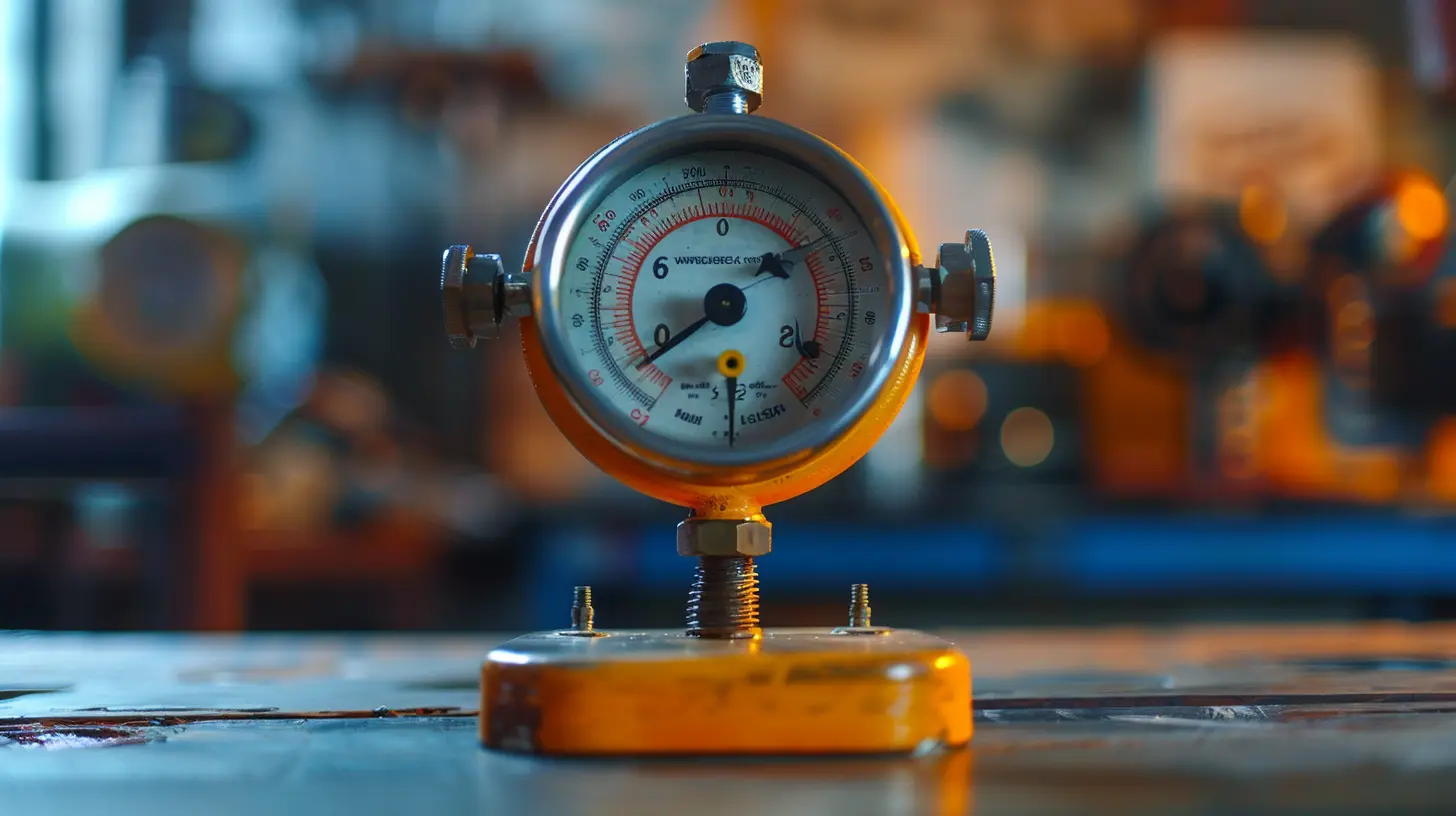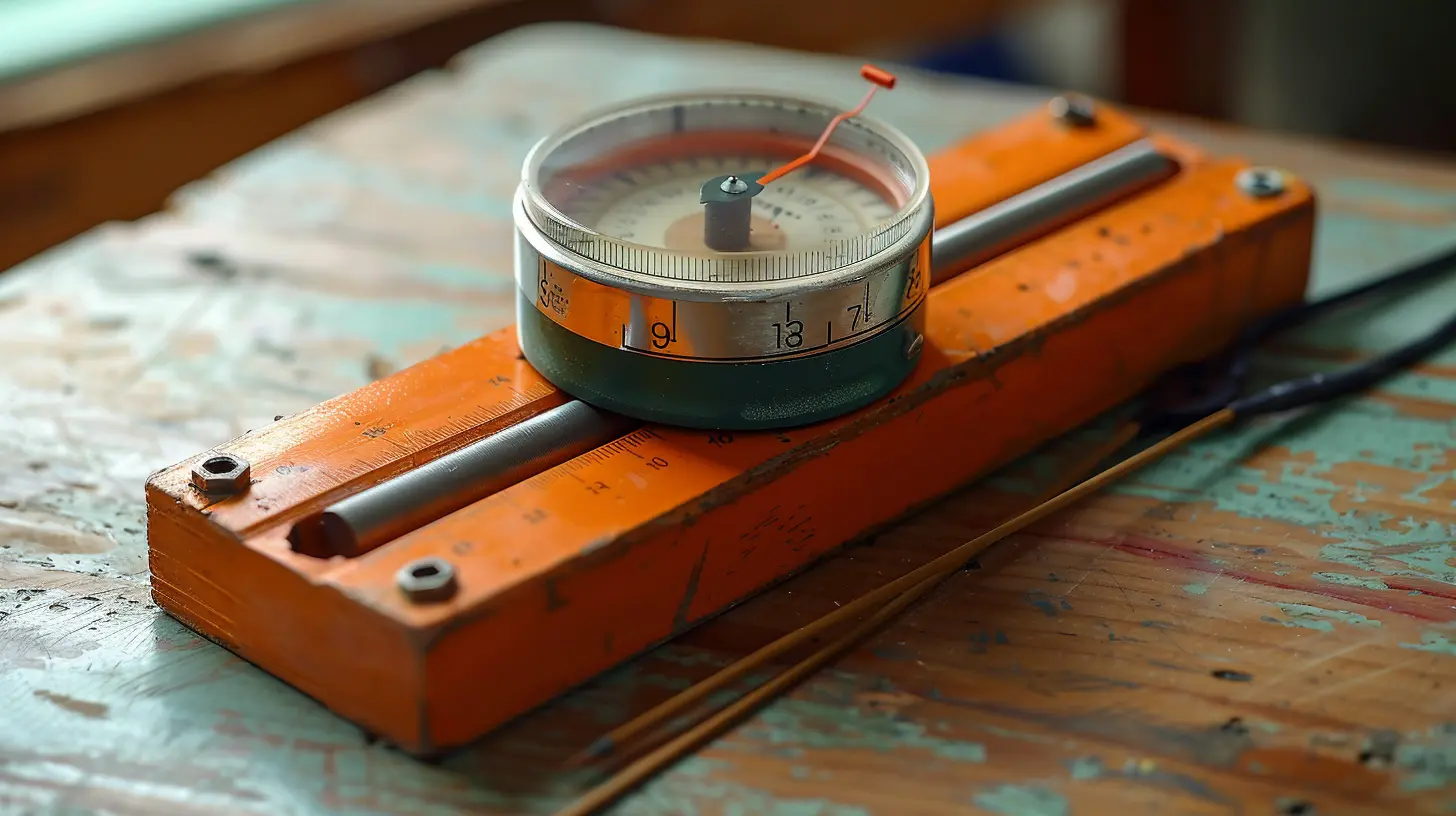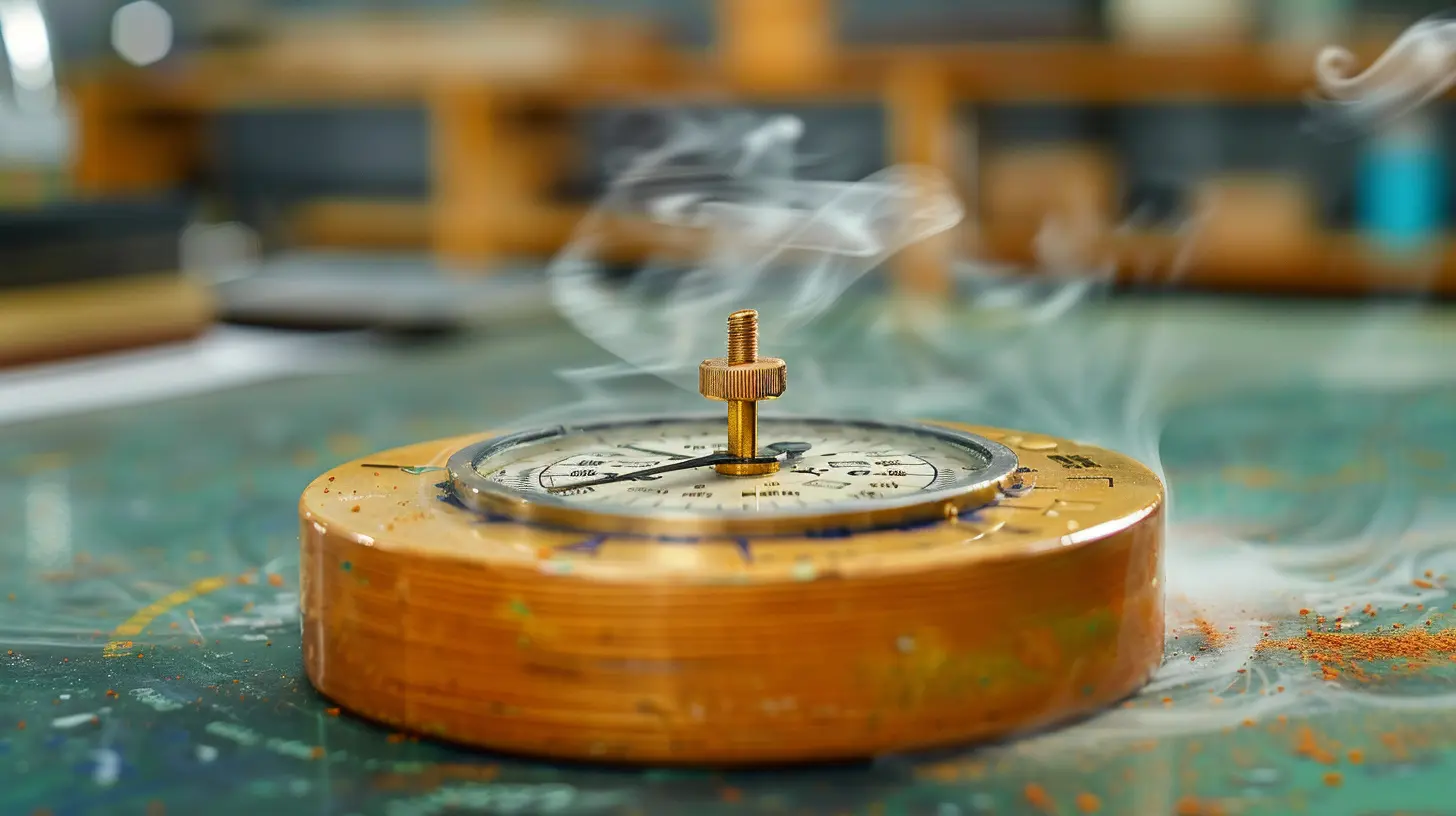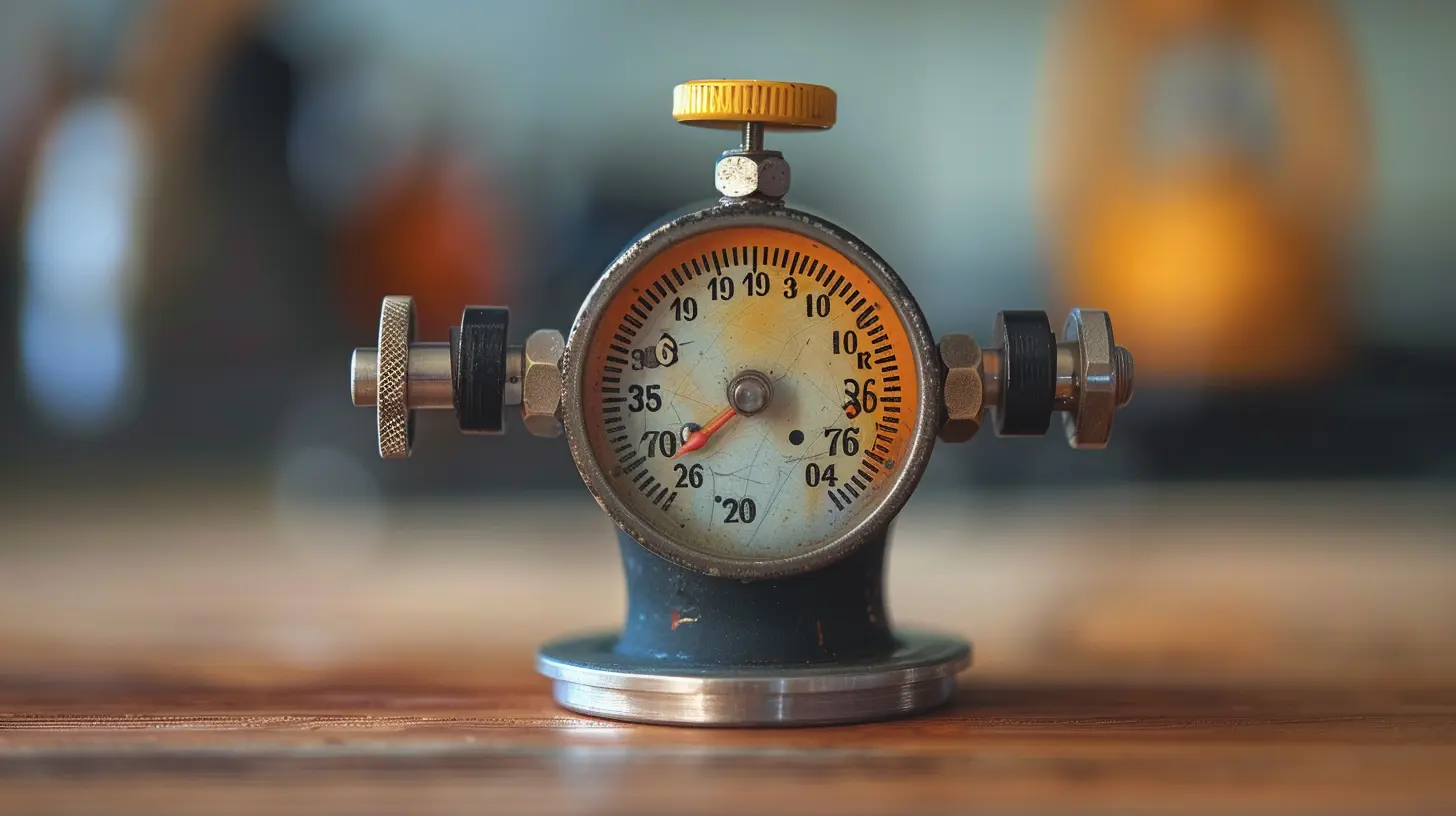Investigating Air Pressure with a Homemade Barometer
18 July 2025
Have you ever looked up at the sky and wondered why some days are sunny and calm while others are stormy and chaotic? The answer, my friend, lies in something invisible but incredibly powerful—air pressure. It’s one of those forces of nature that we don’t often think about, but it’s constantly at play around us.
And here's the good news: you don’t need fancy equipment or a meteorology degree to get a grip on it. All you need is a few household items and a pinch of curiosity. In this post, we’re diving into the world of air pressure by building and experimenting with a homemade barometer.
Yep, you heard that right. You're going to become a mini-scientist right in your own home.
What is Air Pressure, Anyway?
Before we jump into the "how-to," let’s unpack what air pressure actually is. Imagine air as an ocean of invisible gas molecules. Even though we can’t see them, they're always moving, bouncing off each other, and pressing against everything—including you.Air pressure is the force exerted by these molecules as they crash into surfaces. It changes with altitude, temperature, and moisture. When the pressure drops, it often signals bad weather on the horizon. When it rises, sunny spells are likely.
So yeah, air pressure is kind of like Mother Nature’s way of sending text messages about the weather.
How Does a Barometer Work?
A barometer is an instrument that measures this atmospheric pressure. There are several types—mercury, aneroid, and digital—but don’t worry, we’re not getting into toxic chemicals or expensive gadgets here.The version we’re going to build uses super simple concepts: air expands and contracts. This DIY barometer will respond to changes in air pressure by physically shifting a pointer. It’s not magic—it’s science!
Materials You’ll Need
Let’s raid your junk drawer or kitchen cabinet. Here’s what you're looking for:- A clean, empty glass jar or cup (like a mason jar)
- A balloon
- A rubber band
- A straw
- Tape or glue
- A piece of cardstock or stiff paper
- A ruler (optional)
- A pen or marker
Got everything? Great! Let’s get building.
Step-by-Step: Building Your Homemade Barometer
Step 1: Prepare the Balloon
Cut the neck off your balloon. You want the wide, round part. Stretch this piece over the mouth of the jar to form a tight seal. It should be taut like a drum. Use the rubber band to secure it in place.Step 2: Attach the Straw
Take your straw and tape it horizontally across the center of the balloon surface, so one end sticks out over the edge of the jar. Think of it like a seesaw balanced on that balloon drumhead.Step 3: Create Your Scale
Grab that piece of cardstock and stand it vertically behind the jar. Mark the current position of the straw on the card. This will be your baseline measurement. As air pressure changes, that straw’s position will rise or fall.Want to get fancy and track changes over time? Use a ruler and make a scale to track how much the straw moves.
Step 4: Start Observing
Place your homemade barometer in a place where it won’t be disturbed—a windowsill works great. Avoid areas with too much direct sunlight or drafts, as these can mess with your readings.Now, all that’s left to do is wait and watch. Over the next few days, your straw will move up and down as air pressure changes.
What’s Really Happening Inside Your Barometer?
Let’s break this down without any jibber-jabber. When the air pressure outside increases, it presses down on that balloon top. The balloon surface drops slightly, and the end of the straw lifts up. When the air pressure drops, the balloon bulges up, pushing the straw down.It’s kind of like a mini trampoline. More pressure flattens it; less pressure lets it rise.
This simple setup is like a visual translator for something we can’t see. As the straw moves, it draws you an invisible picture of the pressure changes happening in real-time.
Pretty cool for a few bits of trash, right?
Getting Scientific: Tracking and Analyzing Data
Want to take this experiment up a notch? Start a weather journal. Here’s how:1. Record the straw’s position every day at the same time.
2. Note the weather conditions—sunny, cloudy, rainy, etc.
3. Compare your barometer readings to actual weather reports from a trusted weather website or app.
You’ll start to see patterns:
- When the straw goes up (high pressure), you’ll likely have good weather.
- When the straw dips (low pressure), keep that umbrella handy.
This is where science meets detective work. Over time, you’ll get a solid understanding of how air pressure influences the weather—and you'll have the data to show for it.
Why Does Air Pressure Matter?
You might be wondering, "Okay, but why should I care about air pressure?" Here’s why.Changes in air pressure affect everything from your weather forecast to your headaches (some people are sensitive to pressure changes!) to how planes fly. Even fish feel it underwater—it helps them figure out how deep they are.
In a nutshell, this invisible force has a huge impact on our lives, and understanding it helps us make better decisions—from packing an umbrella to predicting potential storms.
Fun Extensions for Curious Minds
Can’t get enough? Neither can we. Here are a few ways to take your experiment further:Add a Thermometer
Temperature affects pressure. Place a thermometer next to your barometer and start tracking both. You’ll begin to see how hotter air expands (decreasing pressure) and colder air contracts (increasing pressure).Build More Than One
Place barometers in different rooms or at different elevations. Compare readings and see how even small changes in location affect pressure.Go Digital
There are apps and digital sensors that track pressure, but nothing beats the tactile feel of seeing that straw move in real-time. Still, compare your homemade readings to digital ones to test your barometer’s accuracy.Troubleshooting Tips
If your straw isn't moving, don’t throw in the towel just yet. Here’s what to check:- Make sure the balloon is airtight—there should be no gaps.
- The straw should be well-balanced, not too heavy or too light.
- Don’t place the barometer near a heater, AC, or sunny window.
- If the balloon becomes loose or wrinkled, replace it.
Remember, science is all about trial and error. Even the best experiments need a bit of tweaking.
The Real-Life Applications of Measuring Air Pressure
Let’s zoom out for a second. What you’re doing here with a jar and a balloon is exactly what meteorologists, pilots, and sailors rely on—just with more sophisticated tools.- Weather Forecasting: Barometers help predict short-term weather changes.
- Aviation: Pilots use air pressure to determine altitude.
- Fishing: Fish behave differently depending on pressure levels.
- Hiking: High-altitude climbers monitor pressure to avoid altitude sickness.
See? Understanding air pressure doesn’t just make you sound smart at parties—it’s genuinely useful.
Final Thoughts: Why This DIY Project Rocks
Here’s why this experiment is more than just a rainy-day science activity:- It’s hands-on learning that feels like play.
- It brings abstract science concepts to life.
- It encourages observation, patience, and curiosity.
- Best of all? It proves that science isn't stuck in a lab—it's everywhere.
Air pressure might be invisible, but its effects are totally visible when you’ve got the right tools—and now, you do.
So go on, start investigating the skies from the comfort of your home. Who knows? This tiny barometer might just spark a lifelong love of science and weather.
all images in this post were generated using AI tools
Category:
Science ExperimentsAuthor:

Fiona McFarlin
Discussion
rate this article
1 comments
Zarek McVey
Great article! The homemade barometer project is a fantastic way to engage students with science.
July 30, 2025 at 5:04 AM

Fiona McFarlin
Thank you! I'm glad you enjoyed the article and found the project engaging for students!


